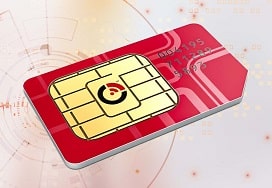Esim Uk Europe Embedded SIM for Internet of Things
Esim Uk Europe Embedded SIM for Internet of Things
Blog Article
Physical Sim Vs Esim Which Is Better Introduction to eSIM Technology
The integration of the Internet of Things (IoT) in smart grids has revolutionized the way energy is monitored and managed. Ensuring reliable IoT connectivity in smart grids is essential for his or her performance, enabling seamless communication between devices, sensors, and techniques. The steady circulate of knowledge provides real-time insights that optimize energy distribution, enhance operational effectivity, and enhance grid resilience.
Smart grids are designed to adapt to the dynamic requirements of energy supply and demand. These grids rely on interconnected units to gather, analyze, and reply to information in real-time. For this ecosystem to function effectively, reliable IoT connectivity is paramount. Factors such as latency, bandwidth, and community stability instantly affect the efficiency of smart grid techniques.
Robust communication protocols are important for facilitating seamless knowledge change. Standardized protocols like MQTT, CoAP, and AMQP provide lightweight alternate options that are best for the constrained environments typical of smart grids. Implementing these protocols ensures efficient message routing and reduces the overhead related to knowledge transmission.
Dual Sim Vs Esim eUICC, eSIM, Multi-IMSI Defined

Another critical facet of dependable IoT connectivity is the selection of communication expertise. Wireless technologies such as LoRaWAN, Zigbee, and NB-IoT supply numerous advantages in terms of coverage and power consumption. Each technology has its personal strengths and weaknesses, making it crucial to pick out probably the most acceptable one based mostly on the precise application and deployment state of affairs.
Security is an integral part of guaranteeing dependable connectivity in smart grids. As units become more interconnected, the chance of cyberattacks increases. Strong encryption strategies and safe authentication mechanisms ought to be universally adopted across the network. These measures shield delicate information and maintain the integrity of the grid's operations.
Network redundancy can significantly improve reliability by guaranteeing continued service availability within the occasion of a failure. Implementing multiple communication pathways supplies different routes for data change, making the complete system more resilient. This redundancy can mitigate risks associated with single points of failure in both communication and power distribution.
Monitoring and analytics tools play a vital function in maintaining reliable connectivity. By continuously assessing network performance and identifying bottlenecks, operators can proactively handle issues before they escalate. These instruments enable real-time visualization of grid efficiency, aiding in decision-making and useful resource allocation.
Which Networks Support Esim South Africa eUICC (eSIM) Support for Routers
Edge computing emerges as a promising solution in the context of IoT connectivity (Esim Vs Normal Sim). By processing information closer to the source, latency could be significantly decreased, permitting for quicker response times. This decentralized method alleviates the burden on bandwidth and enhances reliability by distributing computational resources across the network.
Interoperability between different devices and systems is important in a sensible grid ecosystem. Ensuring that diverse technologies can talk successfully fosters a cohesive environment that maximizes the potential of IoT connectivity. Adopting common standards and frameworks can facilitate this integration, encouraging collaboration among device producers and utility providers.
Regular maintenance and updates are basic to the longevity and efficiency of smart grid techniques. An outdated system may endure from vulnerabilities and decreased reliability. Establishing a routine for software program updates and hardware maintenance can mitigate risks associated with obsolescence and improve overall connectivity.

User schooling and neighborhood engagement contribute to the profitable implementation of IoT in smart grids. Stakeholders must be informed about the benefits recommended you read and functionalities of the expertise. Awareness campaigns can drive greater acceptance and cooperation, encouraging user participation in energy administration practices.
Dual Sim Vs Esim Guide to eUICC Deployments
The implications of reliable IoT connectivity in smart grids lengthen past energy administration. It contributes to enhanced sustainability efforts by optimizing energy use and integrating renewable sources. This connectivity is pivotal in actively managing energy masses, ultimately resulting in a greener and more sustainable energy framework.
Data analytics can empower utility companies to raised understand consumption patterns and predict demand fluctuations. By leveraging this info, utilities can make more knowledgeable selections relating to load balancing, lowering the danger of outages and improving general service reliability.
Investing in research and growth is essential for evolving technologies in IoT connectivity. Collaborative efforts between trade, academia, and governments can drive innovation, ensuing in the improvement of more refined instruments and methods. Continued investment will enable the evolution of smart grids and the improvement of dependable communication throughout various environments.
Use Esim Or Physical Sim Digitizing Processes with eSIM Management
The journey to reaching dependable IoT connectivity in smart grids is multifaceted, requiring a holistic method encompassing technology, safety, and community involvement. As extra units join the community, the complexity will improve, warranting ongoing adaptation and vigilance.
To conclude, ensuring dependable IoT connectivity in smart grids is a multifaceted problem that demands consideration to communication protocols, security, community redundancy, and user training. By adopting a comprehensive strategy that includes these elements, stakeholders can create a resilient energy infrastructure that advantages both providers and shoppers. This evolution provides a vital foundation for sustainable energy administration and helps pave the best way for future advancements within the energy sector (Use Esim Or Physical Sim).
- Implement redundant communication pathways to keep away from single points of failure throughout the IoT community, enhancing resilience in smart grid operations.
- Employ edge computing strategies to course of data closer to the source, reducing latency and ensuring timely decision-making in grid management.
- Utilize high-performance protocols like MQTT or CoAP specifically designed for low-bandwidth, high-latency environments to improve data transmission efficiency.
- Integrate robust encryption and authentication methods to secure data transmissions and minimize vulnerabilities in IoT gadgets connected to the smart grid.
- Regularly replace and patch firmware and software program in IoT devices to protect against rising cybersecurity threats whereas sustaining connectivity stability.
- Conduct thorough network performance assessments to determine and rectify bandwidth bottlenecks that might disrupt reliable IoT connectivity.
- Leverage artificial intelligence and machine studying for predictive analytics to anticipate and manage potential connectivity issues earlier than they influence the grid.
- Foster collaboration between utility providers and IoT resolution builders to ensure compatibility and interoperability across totally different devices and platforms within the smart grid.
- Establish a complete monitoring system to track device status and performance in real-time, enabling immediate responses to connectivity challenges.
- Train personnel in finest practices for IoT gadget maintenance and troubleshooting to ensure that on-ground points are resolved quickly and effectively.undefinedWhat are the key challenges in making certain IoT connectivity in smart grids?
Key challenges embrace network reliability, scalability, security threats, and interoperability amongst various techniques. Addressing these points requires sturdy infrastructure, superior communication protocols, and constant monitoring.
Difference Between Esim And Euicc Multi-IMSI vs eUICC Explained
How can I improve the security of this post IoT units in smart grids?
Implement sturdy encryption strategies, regularly update firmware, and use secure authentication protocols. Additionally, conducting vulnerability assessments might help establish and mitigate potential safety risks.
What communication protocols are best for IoT connectivity in smart grids?
Popular protocols embrace MQTT, CoAP, and LoRaWAN as a outcome of their low energy consumption and reliability. Choosing a protocol depends on the specific use case, network necessities, and system capabilities.
Esim Vodacom Sa Choosing eSIM Remote Provisioning Standard
How can I monitor the IoT connectivity status effectively?
Utilizing community monitoring tools like real-time dashboards and alert methods can present insights into connectivity issues. Regular audits and performance assessments also can help keep optimal operation.
What position does edge computing play in smart grid IoT connectivity?

Edge computing reduces latency by processing data closer to the source, enhancing real-time decision-making for IoT units. This can lead to improved effectivity and reliability in smart grid operations.
Vodacom Esim Problems Cellular Connectivity Terms Glossary
How do I guarantee interoperability amongst totally different IoT units in the smart grid?
Adopt open standards and communication protocols that facilitate compatibility amongst various gadgets. Continuous collaboration with vendors and following industry finest practices can also improve interoperability.
Physical Sim Vs Esim Which Is Better eSIM, eUICC, Global SIM Comparison
What methods can improve the overall reliability of IoT connections in smart grids?
Implementing redundant communication paths, using quality-of-service (QoS) parameters, and frequently updating hardware can enhance reliability. Monitoring and adapting to network conditions is essential for sustained efficiency.
How can knowledge analytics assist in maintaining IoT connectivity in smart grids?
Vodacom Esim Problems eUICC and eSIM Development Manual
Data analytics can identify utilization patterns, predict failures, and optimize resources, resulting in enhanced connectivity. By analyzing knowledge, utilities can proactively tackle issues earlier than they impression service supply.
What is the importance of regulatory compliance in IoT connectivity for smart grids?
Physical Sim Vs Esim Which Is Better eSIM and eUICC Interaction Overview
Regulatory compliance ensures that IoT deployments meet safety, security, and operational tips. Adhering to these standards reduces authorized dangers and fosters belief among stakeholders involved in smart grid operations.
Report this page